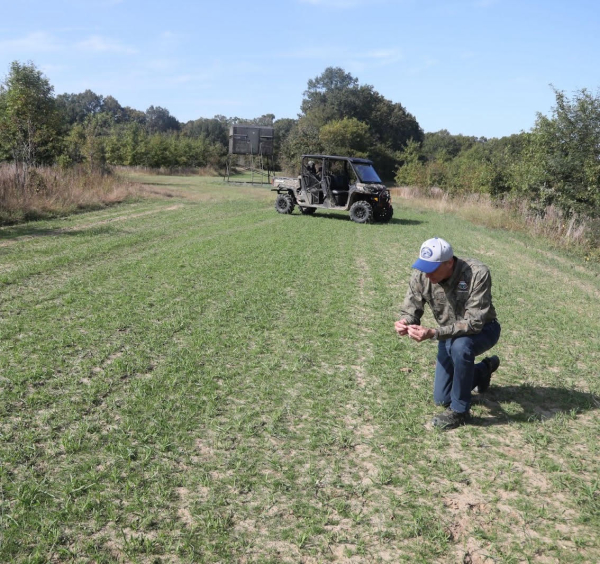Plant It and They Will Come
By Glen Wunderlich
Outdoor Columnist
Member Professional Outdoor Media Association
Work on this season’s deer food plots began a few months ago – in May to be exact – when last year’s annual plots ran their natural course and weeds took over. With a non-selective herbicide application in mid-May, followed with another approximately two weeks later, all but the toughest weeds succumbed, although some desirable clover survived. Another venture into farming for deer was well under way.
Once the ugly weeds turned brown and were undeniably dead, it was time to disk the food plots. According to Ed Spinazzola, author of Ultimate Deer Food Plots, disking no deeper than 4 inches is the way to go. Plowing is not advised in Ed’s book and we have found that it is unnecessary. While plowing is understandable to break up tangled weed structure and heavy soil, it has a way of moving valuable top soil to lower levels where it cannot be utilized. And, when soils are weak and contain substantial amounts of sand, a little topsoil can sure help to hold much-needed moisture for germination and beyond. It doesn’t help to bury it!
That’s why we go along with the light disking operation to cut up the fully decomposed weeds and their roots. In years past, fertilizer and lime applications were made at planting time, but this year I managed to get the job done immediately before disking, which is the preferred method. Oh, how the weeds began to flourish shortly thereafter; they must have loved all the fertilizer and lime, because they shot up like Jack’s beanstalk. Never fear, however, one more spray was in order before planting, but no more tillage. Although the final and third spray could be applied the day of seeding, it was done one week prior.
The disking operation had left the ground somewhat uneven – certainly not conducive to a good, smooth seedbed, so I began the seeding day with a pass of the cultipacker behind my 62-year-old Farmall Cub. With the new hard-maple, wood bearings recently installed, which had been soaked in boiled linseed oil and then thoroughly greased, the cultipacker smoothed out the ground without any further tillage. This is important if you want to minimize weed growth. Tillage at this point may make the soil look “clean”, but it also gives dormant weed seeds a better chance at life.
The next step was to broadcast the brassica mix (and even some winter peas and forage oats) over the soil with a hand-held spreader. If you are up for a brisk workout, time can be minimized by a quick pace and fast hand-cranking. Seed is spread about 8 feet from one end to the other. It’s important not to overdo the seeding however, because too many plants only crowd each other and stunt growth. It’s best to set the gauge on the light side and have some left over. The remaining seed can then be cut back a little more and broadcast again. Since the peas and oats are much larger seeds than the tiny brassica mix, a second pass with a calibration change on the spreader was necessary.
The final step simply involved one more pass with the Cub and cultipacker. With fingers crossed, I now wait for Mother Nature’s help. Some people question the rationale of planting in August, but we know better and so do the deer and other wildlife that feast on the bounty throughout the fall and winter.






